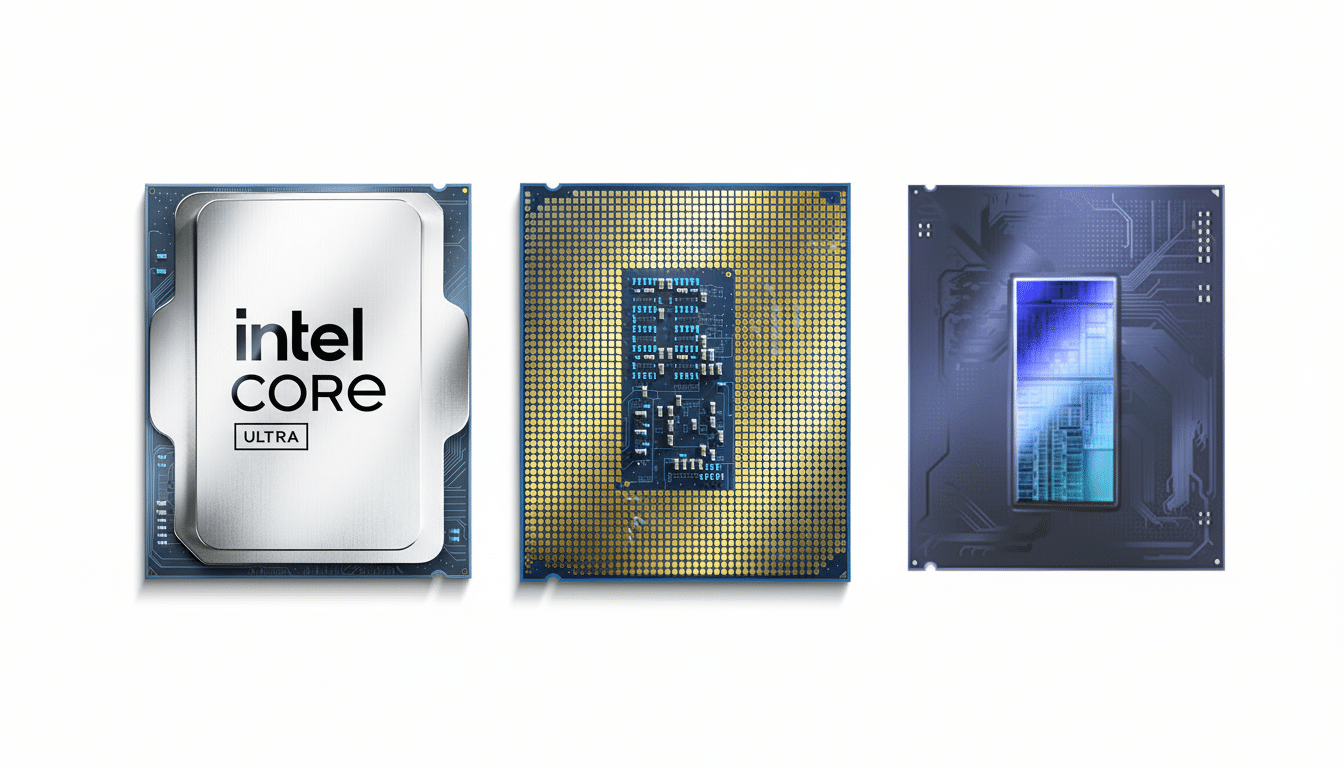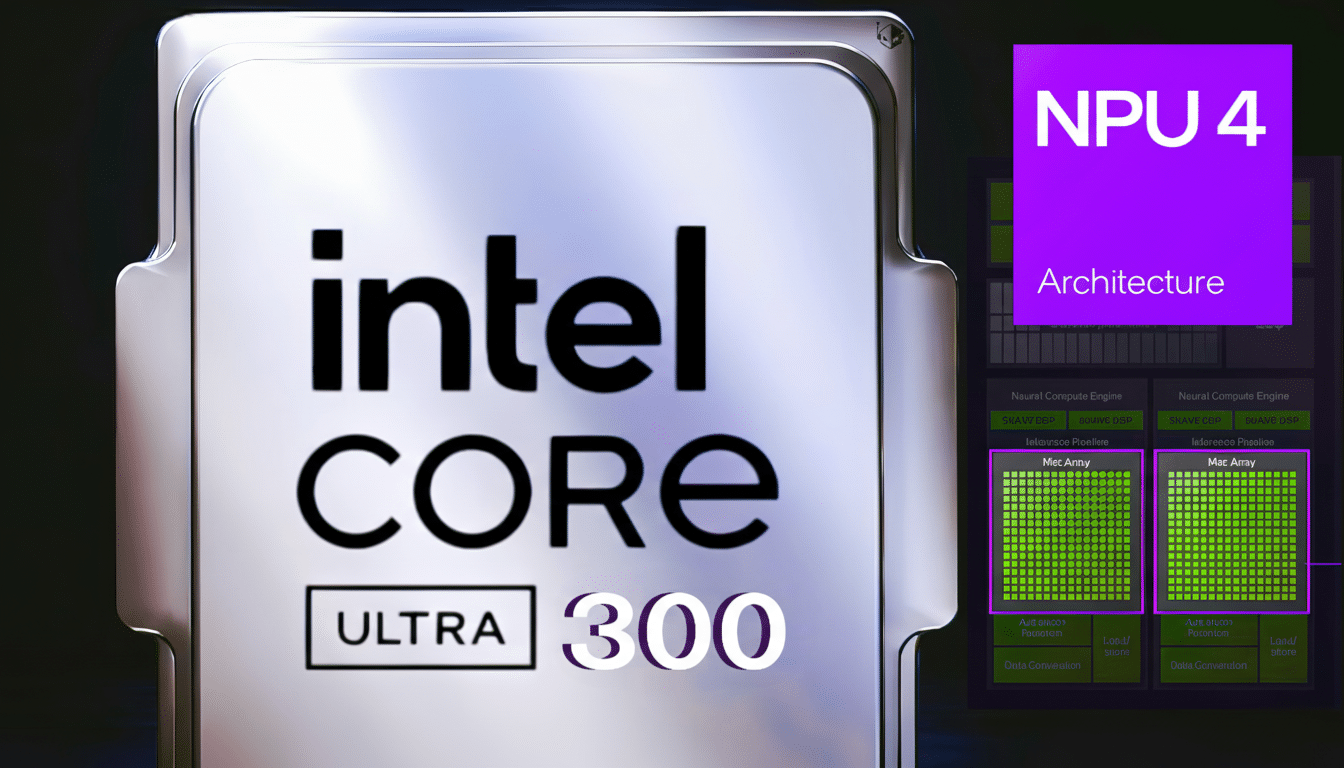Intel’s next mobile platform could be prioritizing efficiency and iGPU muscle over raw CPU megahertz.
There’s a new leak suggesting that the flagship, called the Core Ultra 300, will pack in 16 cores overall but limit itself to just four Performance cores and a turbo of 5.1GHz. Much like the configuration that came attached to the top-bin “388H” part, Panther Lake is tuned to tackle modern mixed workloads and serious iGPU gaming; it’s not a setup designed solely for chasing the highest all-core CPU numbers.

Here is what the 16-core count actually represents
Based on a lineup shared by the leaker @jaykihn0 on X, and then echoed by VideoCardz, the majority of Core Ultra 300 H chips revolve around four Performance cores supported by a larger collection of Efficient and low-power cores. The rumored flagship purportedly uses 4P + 8E + 4 low-power E-cores for a total of 16, with a maximum single-core boost of 5.1GHz. That blend is where Intel’s thread-scheduling strengths shine—Windows Thread Director has become adept at funneling background and bursty workloads to those efficient cores while leaving the P-cores for latency-sensitive work.
Four low-power cores spread across the stack are of particular importance. This “always-on” island is engineered to handle system light loads and background user services with ultra-low draw, enabling better power efficiency and responsiveness. In practice, that can help keep the P-cores parked at low voltage more frequently—a primary lever for thermals in thin-and-light designs that still need to sprint when a single thread is hammered.
Xe3 integrated graphics looks like the standout feature
If there’s one place where Panther Lake seems particularly carnivorous, it’s in graphics support. The entire family will utilize Intel’s Xe3 iGPU architecture, accompanied by core counts that are adjusted per model. Entry parts are supposed to come with two such Xe3 clusters, with mainstream H chips having four. The headliners are the X-badged models: Core Ultra X9 388H, Ultra X7 368H and Ultra X7 358H should pack an “Arc B390” iGPU at 12 cores, with an “Arc B370” (10-core) featured in the lineup as well; this could be found inside the Core Ultra 5 338H.
And if true, that would see Intel delivering a Battlemage-class graphics block in integrated form. Intel has already shown some solid performance jumps from Xe to Xe2 in its recent mobile demonstrations; a 12-core Xe3 might push iGPU gaming closer to the realm of reasonably consistent 1080p playability for popular titles without a discrete GPU — particularly at lower settings. It also gives OEMs options: one cooling solution can work for both the CPU and a decently capable iGPU, reducing weight and cost.
The real impact for buyers is practical. In the previous generation, AMD’s RDNA 3-based iGPUs established a new standard for no-dGPU laptops; Intel’s Arc iGPUs narrowed that lead. With Xe3, Intel appears on course to match or beat that class — at least in esports titles and lighter AAA workloads — but the eventual outcome will be subject to memory bandwidth, power constraints, and driver maturity.
Power targets and the right kind of cooling
Allegedly the H-series features 65W and 80W TDP modes at the discretion of vendors. That choice will affect sustained boost behavior, fan noise, and chassis thickness. The leaker also warns that Panther Lake might be difficult to cool in demanding single-threaded situations — such as those found in code compilation bursts, some creative filters, and game main threads — so premium designs can be expected to employ higher-capacity vapor chambers and tough VRM to keep peak boosts steady.

As always, OEM tuning will be as critical as silicon capability. Two laptops based on the same chip can perform very differently depending on power budgets (short-term and long-term), thermal headroom, and memory configuration. Future reviews will have to evaluate power traces and steady-state frequencies, not just one-shot benchmarks.
Model names on course for a confusing collision
The branding for this generation could be confusing to a lot of shoppers. Intel’s Core Ultra 300 series is being pitted against AMD’s Ryzen AI 300 family. Expect part names like Core Ultra 7 355 or 386H from Intel and AI 9 HX 370 from AMD — a thicket of “300” designations with microverses of difference beneath the hood. Analysts and publications like VideoCardz have pointed to the overlap as a recipe for confusing spec sheets.
Buyer takeaway: Don’t be fooled by the number. Look at:
- Core mix (how many P versus E and low-power E)
- iGPU configuration (Xe3 core count)
- OEM’s determined TDP
Those three factors will tell you far more about performance and battery life than model names.
What to watch next as Intel’s Panther Lake nears launch
There are still a couple of key unknowns, such as finalized clocks across the stack, specifics on memory support, and how widely the X variants will ship. Industry roadmaps indicate that Intel will be using its latest process tech for Panther Lake, but the proof in the performance pudding will come when real systems arrive. Look for early 3DMark, Geekbench, and game results to leak prior to OEMs launching systems, though compare those against AMD’s latest mobile and entry discrete GPUs to obtain a clearer read.
For now, the headline is this: 16-core flagship with a 5.1GHz boost and a big bet on next-gen integrated graphics. Assuming Intel delivers on Xe3 and OEMs are pressured into providing these H-class parts with enough power and cooling, PL laptops might just redefine what no-dGPU gaming looks like in the next wave of thin performance notebooks.

